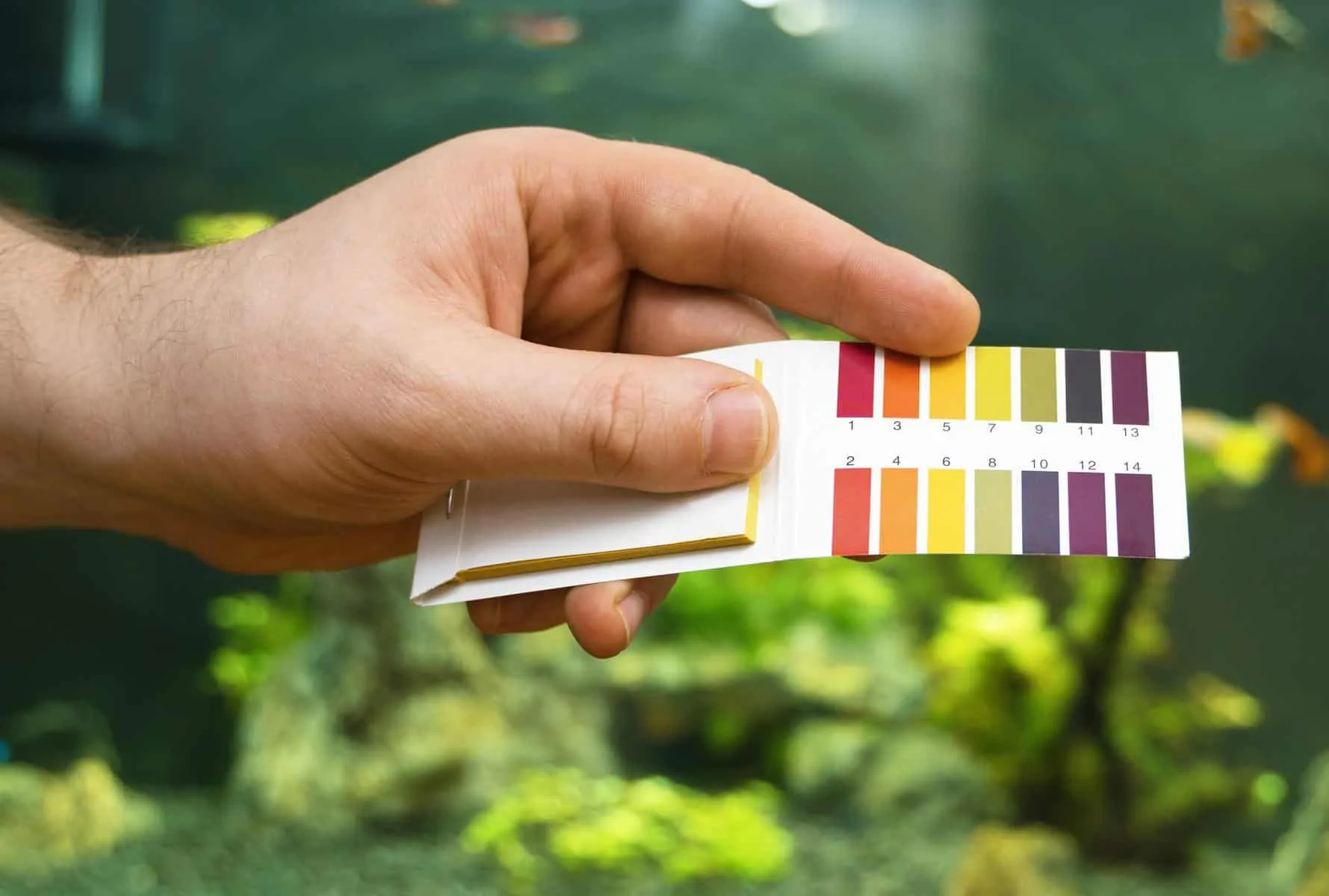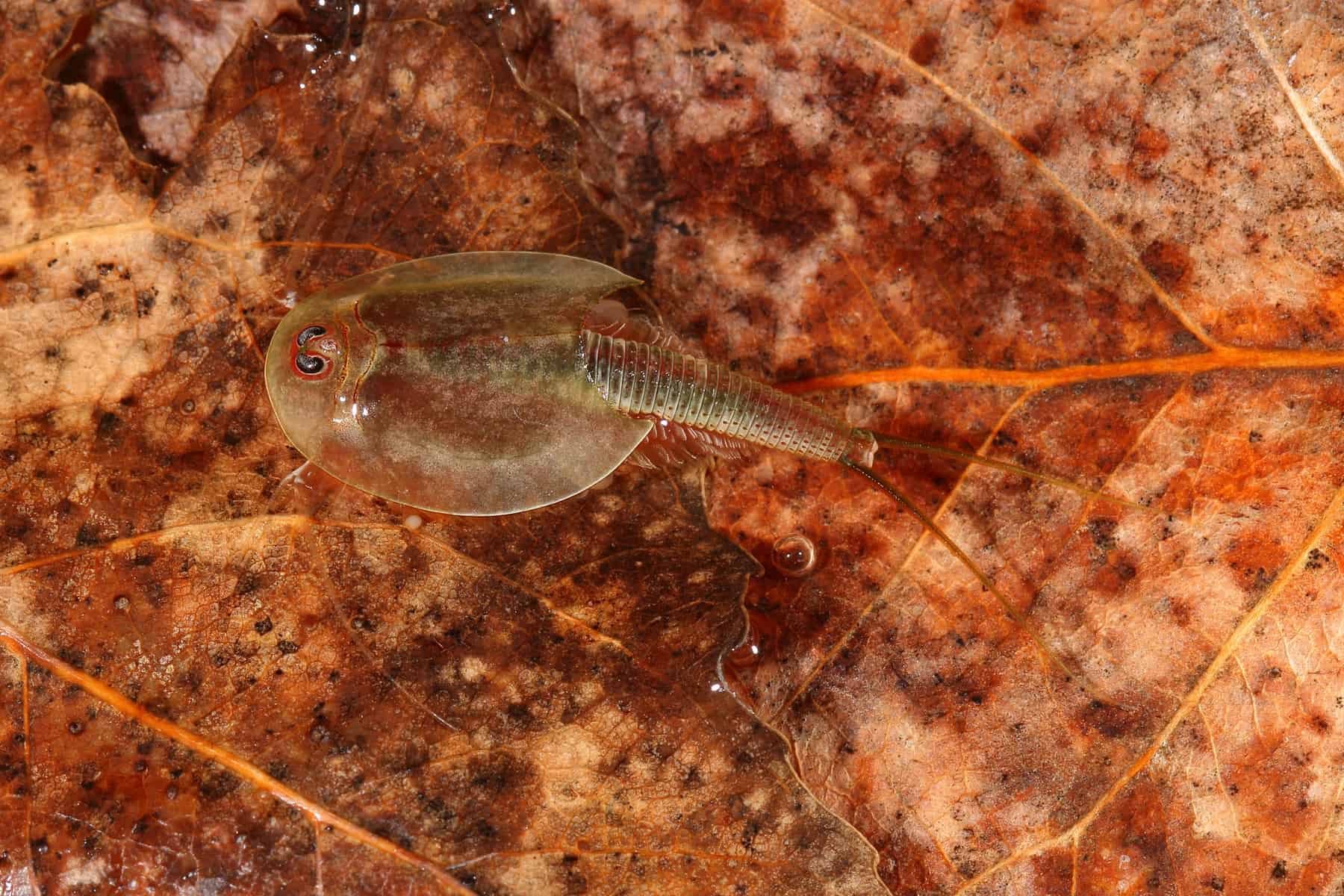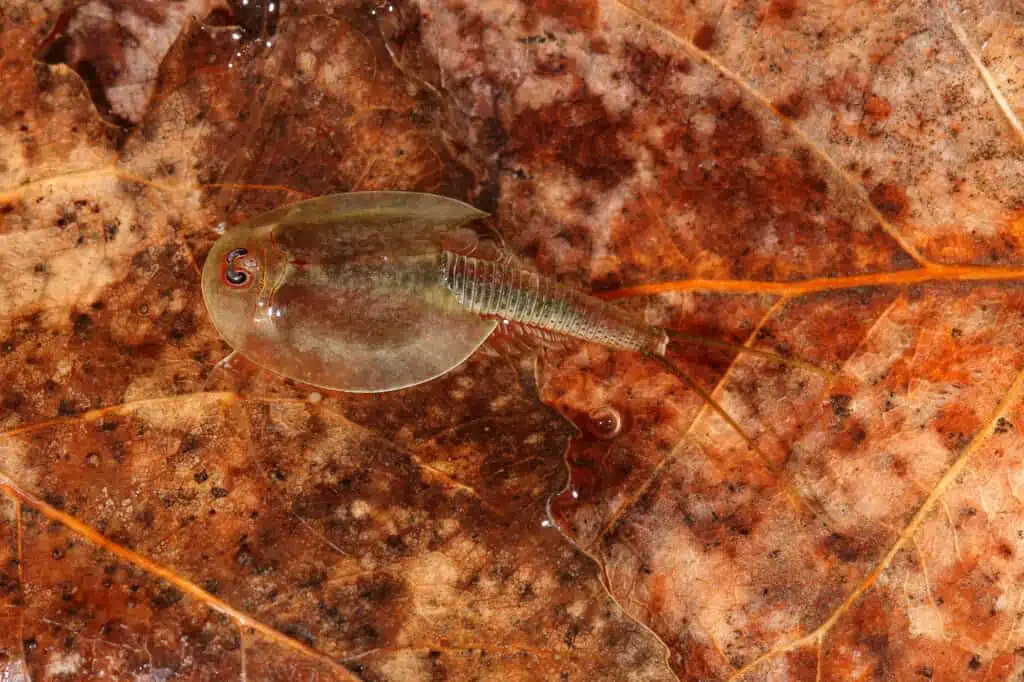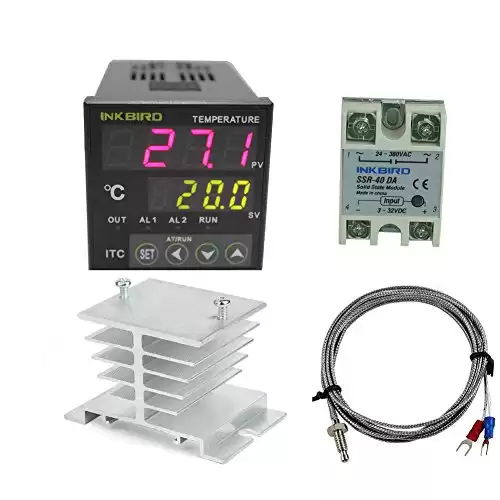If you are a true fish geek, then triops should definitely be on your radar. These fascinating little creatures are small, colorful crustaceans that make a wonderful addition to any aquarium.
I know what you’re thinking – triops in aquariums may seem like a strange idea at first. But trust me, once you learn more about these amazing creatures, you’ll see just how fun and rewarding they can be.
In this guide, I’ll cover everything you need to know about triops in aquariums, including how to set up your own triops tank, the best triops species for beginners, and how to care for your triops so that they stay healthy and happy!
Triops – Summary
| Triops Info | |
|---|---|
| Kingdom | Animalia |
| Phylum | Arthropoda |
| Subphylum | Crustacea |
| Class | Branchiopoda |
| Order | Notostraca |
| Family | Triopsidae |
| Genus | Triops |
| Other Names | Tadpole shrimp, Shield shrimp, Longtail tadpole shrimp, Rice tadpole shrimp, Triassic Triops, or Dinosaur shrimp |
| Scientific Name | Triops cancriformis and Triops longicaudatus |
| Tank size (optimal) | 5gallons (~20 liters) |
| Keeping | Easy |
| Breeding | Easy |
| Size | up to 2 – 3 inches (5 – 7 cm) |
| Optimal Temperature | 72 – 86 °F (22 – 30 °C) |
| Optimal pH | 7.0 – 9.0 |
| Optimal GH | 1 – 10 |
| Nitrate | Less than 40 ppm |
| Diet | Detritivore |
| Predatory | Yes (small organism) |
| Life span | 60 – 90 days |
| Color Form | Reddish-pink to brown |
Triops Origin & Habitat
Triops is a genre of teeny-tiny crustaceans that falls under the subclass Notostraca. Some freshwater species included in this genus are considered living fossils—some dating back to the late Carboniferous period over 300 million years ago!
‘Triops’ originates from Greek, with tria meaning “three” and ops translating to “eye.” This is in reference to the three eyes of this prehistoric creature.
Most notably, Franz Von Paula Schrank, a German priest, botanist, and entomologist was the first person to use the genus name Triops in his 1803 work discussing the fauna found in Bavaria.
If you’re looking to get into the ‘exotic’ side of things when it comes to aquariums, there are over 10 species in the genus Triops.
However, the two most popular and common Triops species in the aquarium trade are Triops cancriformis and Triops longicaudatus.
These guys come from all over the world in places such as Africa, Asia, South America, North America, Australia, Europe, and the Pacific Islands.
Normally, they live near rice fields, rain pools, ponds, swamps, and other types of freshwater. Usually, these areas are wet for a while because of rainfall, but then they dry out from evaporation.
Triops Appearance
Triops have two eyespots on their upper surface that can act as compound eyes, as well as a third eye—an ocellus—in the middle of the other two. Although the third eye cannot see much detail, it can tell light from dark.
In addition, they have a wide carapace on the upper part of their body that looks like a shield. Underneath this is a long abdomen with two thin appendages. This makes them look similar to tadpoles, which is where they get their nickname “tadpole shrimp.”
Plus, this invert has a head, thorax, and abdomen. The head has compound eyes and two pairs of antennae while the anterior thorax comprises 11 segments with Thoracopods or pereiopods. However, the posterior part of the Thorax contains 16-25 separate segments that form rings.
More to add, each ring is made of 6 fused segments and has the capability to hold up to 6 pairs of appendages. These appendages help with sensory functions, locomotion, and respiration and act as a method for feeding.
Typically, triops possess the most legs of any other known crustacean, having between 60 to 70 pairs that all originate from the ventral side.
Triops Size
Depending on the kind, these animals are usually between half an inch to four inches (one to ten centimeters) in length.
For instance, Triops longicaudatus are one to four cm (0.4 – 1.5 inches) while Triops cancriformis are six to seven cm (2.4 – 2.8 inches.)
Triops Lifespan
Generally, triops have a short lifespan, living 50 to 90 days or less depending on the conditions, such as water and food in their environment.
However, you can extend their lifespan by carefully controlling the environment and providing them with the right kind of food.
Triops Life Cycle
Triops have different stages in their lifespan, which begin with hatching. These newly hatched Triops are tiny and orange-colored. Then they go through molting periods, where they shed their exoskeleton until they reach adulthood.
The growth stages continue until the Triops are fully developed and ready to mate, which is one or two weeks after hatching. At this time, they can lay eggs on their own.
Furthermore, Triops eggs can withstand long droughts due to their state of diapause, leading to the desiccation of the vernal pools.
However, when rainwater fills the pool again, the Triops eggs will hatch successfully and life continues as normal.
Triops Behavior
Triops are extremely fun crustaceans to watch because they are constantly moving in search of food. Even though they often live in big groups in the wild, Triops aren’t social animals.
When Triops are born, they tend to be very peaceful. However, as they age and grow larger, they become more predatory by nature and may even start cannibalizing other creatures.
How Do I Care for Triops?
Water Requirements
Water Quality
Triops are hardy animals that can survive in a wide range of water types. However, they still need a clean, shallow freshwater pool to thrive.
To care for triops, you should first fill your tank or aquarium with clean, fresh water. Then, you can use a de-chlorinator or water conditioner to remove any triops-killing chemicals or pollutants.
Instead, you can use bottled water or distilled water. However, avoid using mineral water since they need soft purified water to thrive.
Next, set a regular schedule for water changes. Depending on the size of your triops tank and the number of triops you have, you should aim to change 25% to 50% of your water at least once a week.
To ensure that your aquarium water remains clean, you can use a water test kit to monitor the levels of ammonia, nitrates, and nitrite.
I recommend using API Freshwater Test Strips, as they are easy to use and provide accurate results in just a few minutes.
In case you have an uncycled tank, you should add some beneficial bacteria or a triops starter kit to help establish a healthy ecosystem in your aquarium.
The proper beneficial bacteria level will keep your triops happy and healthy for the duration of their lifespan.
Water Temperature
Triops are cold-blooded animals, meaning they need consistently cool water to stay active and healthy. Ideally, they need 72 – 86 °F (22 – 30 °C) to thrive.
Depending on the temperature of your aquarium, you may need to use an aquarium heater or chiller, particularly if you live in a warmer climate.
To maintain stable water temperatures in your triops tank, I recommend using a digital temperature controller, like the Inkbird Dual 220V Digital Temperature Controller.
- PID and ON/OFF Control Mode with high standard self-adjust function
- Multiple temperature sensors (K, S, Wre, T, E, J, B, N, CU50, PT100)
- Self-adjusting function and intelligent control of the instrument to ensure the long-term stability.It is more suitable for setups without water cycle, such as ovens.
pH Level

In my opinion, pH level is a life-or-death determinant for triops. Ideally, triops need water with a pH between 7.0 – 9.0 to thrive, though they can survive on either end of this range as well.
To track and monitor the pH levels in your triops tank, you can use a pH test kit or digital meter. If the pH levels in your triops tank become too high or low, you can add an aquarium pH buffer to help stabilize them.
Water Hardness
These little guys need soft water between 1-10 to do well, so you’ll need to keep a close eye on the hardness of your triops aquarium. This may require using a deionizing filter or reverse osmosis system.
If your triops tank water is too hard, you can add some aquarium water conditioner to help soften it and make it more favorable for your little crustaceans.
Tank Requirements
Tank Size
Triops are very small, so they don’t require a large triops tank or aquarium. For every adult Triops, 2-4 liters of water is needed for optimal living conditions. This means that in a 5-gallon tank, you can support a population of 5 to 7 triops.
However, you should increase the size of your triops aquarium as the population grows. This will allow each triops to have its own space, while also providing enough water for filtration and circulation.
Filtration System
For the Rearing tank, you won’t need filtration, since it’s only for breeding tanks. It also isn’t safe for baby Triops because after hatching they’re extremely small and could get sucked into the filter easily–even if you use a pre-filter like a sponge.
For a Display tank, you won’t need a filter either, but you will have to do regular water changes. However, if you’re only looking for minimum maintenance, then use filtration of some kind.
Provided the size of your tank meets the size requirement for the filter, it’ll work without any other issues.
Personally, I would always go for sponge filters over other types of filters for small Triops tanks. They don’t cost much and are easy to take care of and clean. Plus, they offer a lot more surface area for your little guys to graze on.
Lighting
While adult Triops don’t need high-powered or intense lighting to survive in captivity, they will do well and stay healthy under low to moderate artificial light. This means you can use regular fluorescent aquarium lights or LED lighting without any problem.
Also, it’s worth noting that lighting is key for a breeding tank since the eggs are able to detect light and dark conditions.
Therefore, creating favorable conditions like optimal lighting and temperature will increase the hatching rate.
Substrate
To suit your Triops’ natural benthic habitat, have approximately 2-3 inches (5-7 cm) of the substrate on the aquarium floor. This will encourage their digging habits as they search for food.
In addition, having a good amount of substrate in the tank enhances the likelihood of retrieving viable eggs because many will be buried out of reach from the adult Triops.
Some perfect substrate options are coral sand, aquarium gravel, small soft pebbles, and aquarium sand.
However, I would recommend sand to those looking for the most suitable substrate to keep Triops. Sand is easier to dig in, causes less water cloudiness, and buffers pH levels correctly.
Triops Tankmates
Although Triops are avid hunters, they won’t kill other creatures unless they’re starving. Consequently, it’s possible to keep them in a non-violent community tank. Some good triops tankmates include:
- Fish: While Triops make great tank mates for other peaceful fish, they don’t mix well with more aggressive or larger tropical fish like Botia lohacata, Cichlids, Loaches, and Goldfish. Other ideal companions for your pet Triops include community fish that are similarly calm in nature, including Panda Garra, Pygmy Cory Catfish, and Otocinclus Catfish, among others
- Dwarf Shrimp: Although Triops and dwarf shrimp don’t usually live together in the wild, it’s possible to keep them in the same tank. If the shrimp are healthy, Triops won’t bother them, but if they’re sick or have recently molted, the Triops will eat them
- Freshwater snails: The only problem with having Triops as companions for freshwater snails is that they might try to eat very small snacks. Once they have something that fits between their mandibles, or pincers, they won’t let it go
- Crayfish and Crabs: There are very few issues that arise from keeping dwarf crayfish like Cambarellus Diminutus, and Cambarellus pure, as well as small freshwater crabs like Pom Pom Crab or Thai Micro Crab with Triops. These species aren’t large enough to overpower Triops, even if desired
- Dwarf Frogs: Adult Triops are safe with a Dwarf frog–they are too large to be swallowed. However, Small Triops will be eaten by them as African Dwarf Frogs fit anything in their mouths that they deem edible
Triops Diet & Feeding
Did you know that triops aren’t only scavengers but opportunistic predators, too? Their diet revolves around animal and plant matter, as well as their commercial fish food options.
To ensure they’re getting everything they need, here is a list of ideal foods for your triops:
- Daphnia
- Tubifex worms
- Grindal worms
- Bloodworms
- Detritus worms
- Fruit flies
- Copepods
- Brine shrimp
- Fish fry
- Insect larvae (mosquito larvae preferably)
- Fresh veggies (boiled carrots, romaine lettuce, peas, potatoes, etc.)
- shrimp pellets
- shrimp granules
- fish flakes
- algae wafers
Keep in mind that Triops are known to consume their old skins and the leaves of aquarium plants (such as Elodea, Marimo moss balls, etc.), algae, detritus, biofilm, and organic debris.
Also, it’s not recommended to have these creatures in tanks with delicate or expensive plants because they will likely feast on them – devouring soft leaves and roots voraciously.
If you don’t want to risk losing your slow-growing plants, they may be able to withstand a little nibbling from triops since they grow back relatively quickly.
For feeding frequency, a good rule of thumb is to feed them twice daily with adequate portions. Also, you should remove any leftovers at the end of the day to prevent contaminants and water rot.
Not only will this help reduce cannibalism rates, but your shrimp will be healthier overall. If there isn’t enough food available, they will actually use their thoracic appendages as a form of filter feeding.
Triops Breeding
Generally, Triops reproduce in multiple ways, one of which is sexually when a population has both males and females. In this instance, they will mate. The male fertilizes the female which then lays batches of desiccation-resistant eggs.
Additionally, some Triops populations may only have hermaphroditic individuals that are able to self-fertilize.
There is another method, known as parthenogenesis, where an egg develops into an embryo without being fertilized. In this way, female Triops can reproduce on their own and don’t require a mate.
Usually, females can lay anywhere from 10 to 100 eggs at a time, and they can also change the composition of their eggs according to environmental conditions.
For example, when conditions aren’t good for survival, such as a lack of food or water, females will create thicker eggshells that allow the embryonic stage inside to go dormant until conditions improve.
These eggs can go through extreme temperature changes of up to 80°C and still survive. Also, they are very light, so the wind easily carries them long distances. Because of these qualities, Triops have spread worldwide.
How Do I Set Up a Triops Eggs Tank?
Now that you know more about triops and how they breed, it’s time to set up the ideal environment for their eggs.
First, you’ll need to get some viable Triops eggs. You can find these at most fish or aquarium stores, either in-person or online. They usually come in a kit with things like dried eggs, coral sand, a plastic tank, and care instructions.
Get a small, clean container and fill it with a few inches of fresh water. Make sure the glass container is shallow (2-3 inches or 5- 7 cm deep at most)! This is important because if the water depth is too great, baby Triops will have difficulty finding food.
For this process, use spring water, rainwater, or tap water that has been treated with a commercially available dechlorinating agent or water conditioner.
Then, add a small layer of sand to the container and sprinkle the Triops eggs on top. Finally, avoid exposing the eggs to direct sunlight and keep them warm under a lamp to stimulate hatching.
Typically, the eggs will hatch anywhere between 48 to 96 hours given optimal conditions. Once two days have passed since hatching, you can then begin feeding them properly.
What Should I Feed Baby Triops?
On the 8th day, begin feeding your Triops crushed fish food or spirulina powder. Now, you can transfer them to the main tank.
However, before doing so, slowly introduce them to the new tank’s conditions. This way, they can get accustomed and avoid any shock when fully introduced.
At this stage, you can start feeding these freshwater crustaceans with uncrushed flakes or pellets. Make sure to feed them two times a day.
To ensure they’re getting all the nutrients they need, supplement your Triops’ diet with protein and vegetables starting from the second week.
Not only do Triops lay a lot of eggs, but they bury them in the sand, too. This means that the eggs can be extracted from the substrate, dried out, and stored for later use.
Don’t worry – the Triops eggs will remain viable for many years. For example, Triops longicaudatus eggs can stay in a state of diapause for up to 20 years.
Under the best conditions, Triops grow rapidly, going from nearly microscopic to doubling in size every day until they reach their adult form.
Common Issues With Triops – Eggs Not Hatching
The most common issue people face when raising Triops is death. Most often, there are many underlying issues:
- Evolution’s old standby: According to the study, even under the best circumstances, not every egg hatches during a particular hydroperiod. Some eggs remain dormant until future hydroperiods have arrived, thus dissipating some of the risks over time
- In some Triops kits, most of the eggs aren’t Triops eggs, but eggs of other creatures such as fairy shrimp or daphnia
- Light is necessary for Triops eggs to trigger hatching. As a result, during the hatching period, you need an extended light cycle. If possible, it should be on for 24 hours
- The water temperature greatly affects the hatching of Triops eggs. For optimal results, the temperature should be maintained between 22 – 27 degrees Celsius (or 72 – 80 Fahrenheit)
- The presence of minerals is one survival tool that Triops have relied on for millions of years. The logic behind it is straightforward: in nature, Triops are found in pools of water that can rapidly dry up. When this happens, the number of minerals dissolved in the water increases, which is a sign that the pool won’t be inhabitable in the near future. The eggs can detect these high mineral levels and determine that fresher, cleaner water would be a better option for the development
Would It Be Possible to Keep Triops in a Fish Tank?
Triops can only survive in a fish tank if the right conditions are met. For example, triops eggs cannot hatch in a community tank– they must be raised in an isolated breeding tank and then transferred to the main tank after they’ve fully matured.
However, if your triops are smaller than a ½ inch, they will likely be drawn into the filter and die.
Also, if you introduce them to an aquarium that has omnivorous tankmates before they’re sufficiently developed, tiny triops become easy prey and get eaten.
If you want to keep triops, it’s best to have a species-only aquarium. They can add some color to a community tank, but they’re not built to last in that kind of environment.
Plus, triops are sensitive to changes in water conditions, especially pH levels, so you need to be mindful of the parameters you set for them.
Are Triops Good Pets?

If you’re looking for an affordable and low-maintenance pet, a triops may be the right option for you. They don’t need much more than a small aquarium and some food to survive.
In addition, they’ll eat just about anything, so you don’t have to worry about them being picky eaters. Also, since they only live 6 to 12 weeks in captivity, they’re not a huge commitment.
FAQs
Which Tank-Mates Can I Put With Triops?
To ensure a peaceful aquarium environment for your triops, only stock their tank with small fish that are herbivorous or have mouths too small to eat them. A few good options to consider include the following:
- Glow light tetras
- Cardinal tetras
- Cory catfish
- Dwarf otocinclus catfish
- Dwarf African frogs
Can Triops and Betta Fish Co-exist?
I don’t recommend keeping Betta fish with Triops because Betta fish are carnivorous and aggressive.
Even though it might be possible to keep the two together if your bettas are female, well-fed, and in a tank that is large enough with plants and other hiding places, I still wouldn’t advise it.
Can Triops and Cichlid Fish Co-exist?
Cichlids are mostly aggressive carnivores, so it’s not a good idea to put them in the same aquarium as triops. Cichlids hunt and eat small aquatic creatures that move slowly or weakly.
Therefore, Triops would be easy prey for cichlids and wouldn’t survive long in a community tank environment with other fish.
Do Triops Get Along With Sea Monkeys?
Sea monkeys and triops shouldn’t live together because they have different water preferences.
Sea monkeys are herbivores who need saltier water to survive, while triops prefer freshwater environments. If given the chance, triops would eat sea monkeys, as they’re omnivores.
Do Triops Get Along With Shrimp?
Cherry shrimp can coexist with triops if they’re well-fed and the tank is large enough to accommodate hiding places for both species.
However, it’s important to note that triops are opportunistic feeders and could prey on smaller crustaceans such as crabs or shrimp if given the opportunity.
Can Triops and Snails Coexist?
Adult pond snails, such as mysteries, nerites, and ramshorns, can typically be kept in a tank with triops.
Not only will the triops provide the adult snails with a nutrient-rich source of food by eating their babies, but it also helps control snail overpopulation.
Do Triops Get Along With Frogs?
For the best results, only introduce full-grown triops to a community tank with frogs. If the frogs are too big or kept in an overcrowded environment, they may eat the smaller triops.
Last Words
If you’re looking for a unique and low-maintenance pet, triops may be the perfect choice for you.
While they require a bit of care and attention when it comes to tank conditions and water parameters, these hardy little creatures are generally easy to care for and will eat just about anything.
So, if you’re up for the challenge, why not give triops a try? With the right tank and setup, you may just find that triops make the perfect pet!
I hope this information has been helpful and that you’ll consider adding triops to your tank. If you have any other questions about triops care, please don’t hesitate to reach out.



